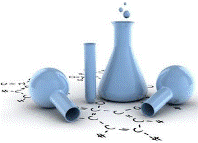Chemical and Biomolecular Engineering, Department of

Department of Chemical and Biomolecular Engineering: Faculty Publications
Date of this Version
2009
Document Type
Article
Citation
PNAS vol. 106 no. 37, September 2009
Abstract
The liver is a major site for the metabolism of xenobiotic compounds due to its abundant level of phase I/II metabolic enzymes. With the cost of drug development escalating to over $400 million/ drug there is an urgent need for the development of rigorous models of hepatic metabolism for preclinical screening of drug clearance and hepatotoxicity. Here, we present a microenvironment in which primary human and rat hepatocytes maintain a high level of metabolic competence without a long adaptation period. We demonstrate that co-cultures of hepatocytes and endothelial cells in serum-free media seeded under 95% oxygen maintain functional apical and basal polarity, high levels of cytochrome P450 activity, and gene expression profiles on par with freshly isolated hepatocytes. These oxygenated co-cultures demonstrate a remarkable ability to predict in vivo drug clearance rates of both rapid and slow clearing drugs with an R2 of 0.92. Moreover, as the metabolic function of oxygenated co-cultures stabilizes overnight, preclinical testing can be carried out days or even weeks before other culture methods, significantly reducing associated labor and cost. These results are readily extendable to other culture configurations including three-dimensional culture, bioreactor studies, as well as microfabricated co-cultures.


Comments
Used by permission.